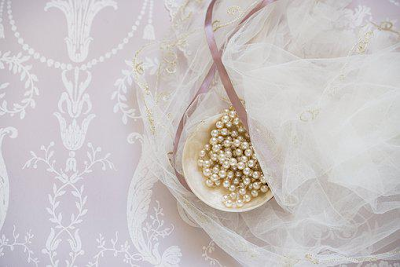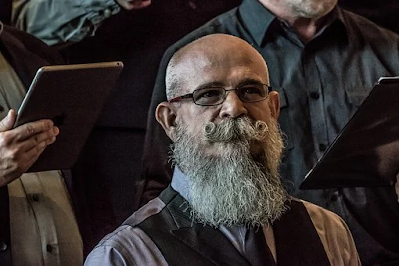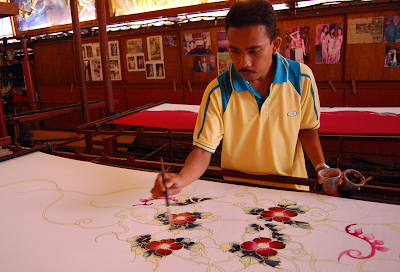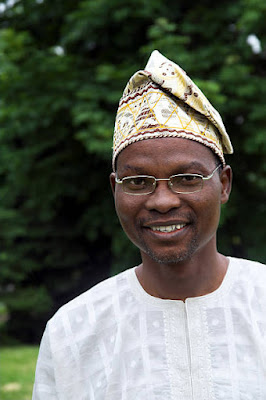Featured
- Get link
- X
- Other Apps
Charles Baudelaire
The finest French poet of the nineteenth century was perhaps Charles-Pierre Baudelaire (1821–1867).
His most well-known work is a volume of poetry titled Les fleurs du mal (Flowers of Evil), which was published in 1857 and was accused of blasphemy and obscenity.
Baudelaire was also a significant translator and art critic.
He established himself as a significant fashion and dandyism thinker.
Baudelaire spent a lot of time and money on his looks when he was younger.
He embraced an austere style of dandyism that was neither foppish nor bohemian at a period when the masculine wardrobe was becoming more sombre.
He embraced and even emphasized the style by dressing entirely in black, in contrast to many of his contemporaries who disliked the tendency toward gloomy, harsh attire for males.
Baudelaire would not have agreed with Thomas Carlyle's characterization of the dandy as "a clothes-wearing guy," yet dandyism for him encompassed more than just attire.
Despite the fact that dandyism is not specifically discussed in Baudelaire's poems, he wrote about it in his private notebooks under such titles as "The Eternal Superiority of the Dandy.
What is the Dandy?, "On the Heroism of Modern Life," a segment of his Salon of 1846, and "The Painter of Modern Life," two of his most well-known writings (1863).
The focus of Baudelaire's critique is on the modernity of dandyism.
He said that dandyism "is a contemporary entity, resulting from wholly new sources." It emerges "when aristocracy is just starting to crumble and democracy is not yet all-powerful." Baudelaire, like many other artists of the nineteenth century, had mixed feelings about the emergence of capitalism and democracy.
Modern middle-class men's clothing, according to him, is "a uniform livery of misery [that] gives testament to equality." He said that it was "a sign of continuous sadness." Baudelaire, on the other hand, argued that everyone should live in their own time.
"However, does not this much-abused garment possess its own beauty?" Both a "political beauty, which is a symbol of universal equality," and a "poetic beauty" may be found in the contemporary man's frock coat.
Baudelaire believed that dandyism declared a new kind of cerebral elitism in lieu of the equality that contemporary men's uniform clothing appeared to convey.
The concept of building a new sort of aristocracy based on heavenly qualities that effort and money are unable to grant may occur to certain men amid the turmoil of these times.
The final ember of heroism in a decadent world is dandyism.
Baudelaire's modern dandy rejected the bourgeois capitalist hegemony of money as well as the foppish accoutrements of pre-revolutionary aristocratic attire.
The Baudelairean dandy was more than simply a well-off guy dressed in pricey, stylish black clothes.
As many thoughtless people tend to assume, dapperness is not defined by an excessive appreciation for material refinement, according to Baudelaire.
"For the ideal dandy, these goods serve only as markers of his aristocratic intellectual superiority.
Furthermore, the excellence of his toilet will consist in complete simplicity to his eyes, which cherish distinction above all else.
Black, a noncolor that is still strongly connected with both authority and rebellion, was one aspect of Baudelaire's minimalist style, as seen by the following quotes from Quentin Tarantino's movie Reservoir Dogs: Why can't we choose our own hue, Mr. Pink? JOE: I once gave it a go.
It is ineffective. Four men are squabbling about who will be Mr. Black.
Unlike nineteenth-century women's dress, which was very intricate and ornamental, contemporary men's clothing—and even more so the clothes of the dandy—is distinguished by simplicity.
Women like Coco Chanel did not develop the drastically reduced female fashion trend that is typified by the tiny black dress until the 20th century.
In fact, Chanel may be considered one of the first female dandies.
Yet contemporary feminists find Baudelaire's views on women to be problematic.
Woman is the opposite of the dandy since she is "natural," according to Baudelaire.
She is only admirable to the degree that she fabricates a character via clothing and cosmetics, and even then, Baudelaire calls her "a type of idol, dumb maybe, but dazzling." Putting aside his conflicted feelings toward women, Baudelaire provided insightful analyses of fashion that shed light on contemporary life and art.
His article The Painter of Modern Life in particular was one of the earliest and most in-depth studies of the connection between fashion and modernity (modernity).
Baudelaire believed that fashion was the secret to modernity and that it was impossible to represent contemporary people without an understanding of their clothing.
According to Baudelaire, the reason why so many artists "clothe all their topics in the clothing of the past" is simply "laziness." In his essay, he said that the draperies by Rubens or Veronese "would in no way teach you how to show fabric of current manufacturing." Finally, the gesture and attitude of the modern woman give her outfit a life and a particular character that are not those of the woman of the past.
"Furthermore, the cut of skirt and bodice is by no means identical.
Baudelaire believed that beauty had two facets: the timeless and the transient.
Fashion was a sign of modernity since it was so transient, always evolving into something new.
The ability to "distill the eternal from the fleeting" was essential for the modern artist, whether they were painters or poets.
What poet would dare to express the pleasure brought on by the presence of a great beauty by separating the lady from her garment, as Baudelaire put it?
Baudelaire went far beyond other dandies and authors of his day, including George ("Beau") Brummell, Jules Barbey d'Aurevilly, and Théophile Gautier, as a fashion theorist.
He influenced modernist thinkers like Walter Benjamin and Georg Simmel as well as poets like Stéphane Mallarmé.
In fact, Baudelaire's contribution to the current study of fashion is so fundamental that it is almost impossible to conceive.
Find Jai on Twitter | LinkedIn | Instagram
See also:
Benjamin, Walter; Brummell, George (Beau); Dandyism; Fashion, Theories of; Little Black Dress; Mallarmé, Stéphane; Simmel, Georg; Wilde, Oscar.
References And Further Reading:
Baudelaire, Charles. The Painter of Modern Life and Other Essays. Edited and translated by Jonathan Mayne. London: Phaidon Press Ltd., 1964.
Lehmann, Ulrich. Tigersprung: Fashion in Modernity. Cambridge, Mass.: MIT Press, 2000.
Moers, Ellen. The Dandy: Brummell to Beerbohm. London: Secker and Warburg, 1960.
Steele, Valerie. Paris Fashion: A Cultural History. 2nd ed. New Haven, Conn.: Berg, 1999.
- Get link
- X
- Other Apps










